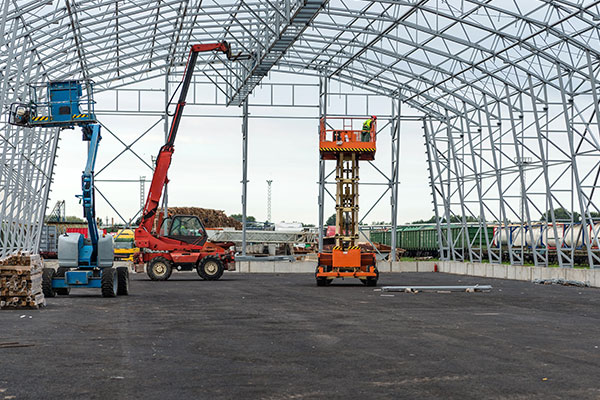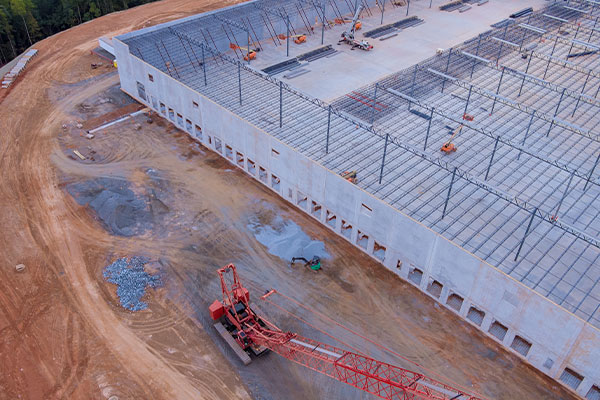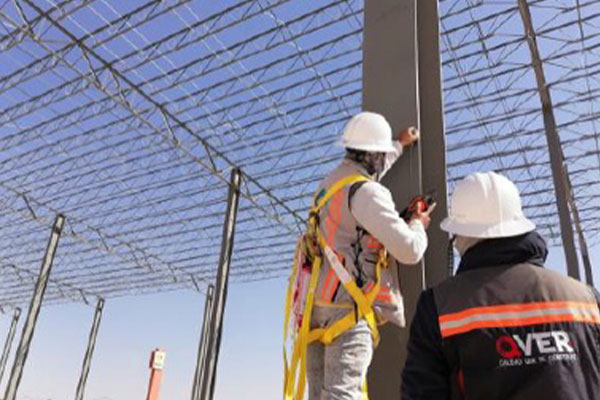The in situ evaluation of concrete strength is a major challenge in assessing the condition of existing infrastructure or the quality control of new constructions.
Owners and maintenance managers of existing concrete structures typically prefer non-destructive and non-intrusive methods to avoid further damage to a structure that is already in difficulty. In construction projects, switching to non-destructive methods means less intervention, shorter downtime, and cost savings.
However, all parties agree that concrete strength is a fundamental parameter. In this article, we will review possible options and practical solutions for in situ evaluation of concrete strength.
At QVER, we specialize in non-destructive testing (NDT) methods that offer an interesting approach to evaluate concrete compression strength. NDT methods provide access to material properties while remaining fast and moderately priced.

Here are the top 5 non-destructive testing solutions for in situ evaluation of concrete strength:
1- Concrete Core Compression Test
The extraction of concrete samples and compression strength tests are often considered the most cost-effective and reliable solution. In fact, many codes and guidelines consider this to be the only approved method for evaluating concrete strength. In this case, a concrete core is taken from the existing structure. The core needs to be cut and the surface prepared. Then, the compression strength of the core is tested. However, there are certain questions that need to be answered:
Where to take the concrete cores from? How to handle the cores correctly (maintain moisture, safe mobilization)? How many cores will produce reliable information?
2- Pull-Out Test
The concept behind the pull-out test is that the pulling force required to pull a metal disk, along with a layer of concrete, from the surface to which it is attached, is related to the compression strength of the concrete. It is usually used for early diagnosis of strength problems. However, it can be used to evaluate concrete strength in existing structures. The pull-out test involves placing a small piece of
equipment on the bolt, nut, screw, or external fastening. Then, this is pulled to the designated tensile load level to determine how strong and secure the fastening is.
3- Rebound Hammer for Concrete Strength
The rebound hammer works on the principle of rebound and involves measuring the rebound of the mass of a spring-driven hammer after its impact with the concrete. New versions of the test have been commercialized and are used to assist engineers and inspectors with a wider range of material properties. Due to its simplicity and low cost, the rebound hammer is the most widely used nondestructive
test for concrete.
4- ltrasonic Pulse Velocity
UPV methods have traditionally been used for quality control of materials, mostly homogeneous materials like metals and welded joints. With recent advances in transducer technology, the test has been widely accepted for testing concrete materials. The testing procedure has been standardized as «Standard Test Method for Pulse Velocity Through Concrete.»
5- Combined NDT Methods
Improving the accuracy of strength prediction is achieved through the use of correction factors that take into account the influence of cement type, cement content, petrological aggregate type, fine aggregate fraction, and maximum aggregate size. The accuracy of combining rebound hammer and ultrasonic pulse velocity results in higher accuracy in estimating concrete compression strength.
At Q-VER, we believe it is essential to consider that the accuracy of each and every relationship depends on the calibration and correlation made with destructive testing, in this case, core samples.




